Rainforest People
Explore some of our collections related to the Waiwai people who live in the rainforest, in this resource for learning.
Explore some of our collections related to the Waiwai people who live in the rainforest, at the Horniman – download the resources below, or, if you would like to make your own trails or worksheets tailored to your visit many of the images and text below and in our other resources can be easily copied and pasted to your own design.
- Perhaps use images from objects located in different galleries and in the gardens to create a challenge or simple trail through the Museum to find specific objects or places.
- Use object images to encourage independent research, for instance, find out and write down three facts about an object or group of objects. Alternatively, give facts or clues and challenge your pupils to identify mystery objects.
- Set an alphabetical challenge to find or draw 26 objects one for each letter of the alphabet.
- Create a sketchbook challenge.
Please note that our Natural History Gallery is now closed as part of a major 2 year redevelopment, Nature + Love. The rest of our galleries, displays and gardens will be open as usual, with plenty across the site to support your topic (including our Music and World Galleries).
Due to the gallery closure, the jaguar in this resource is no longer on display.
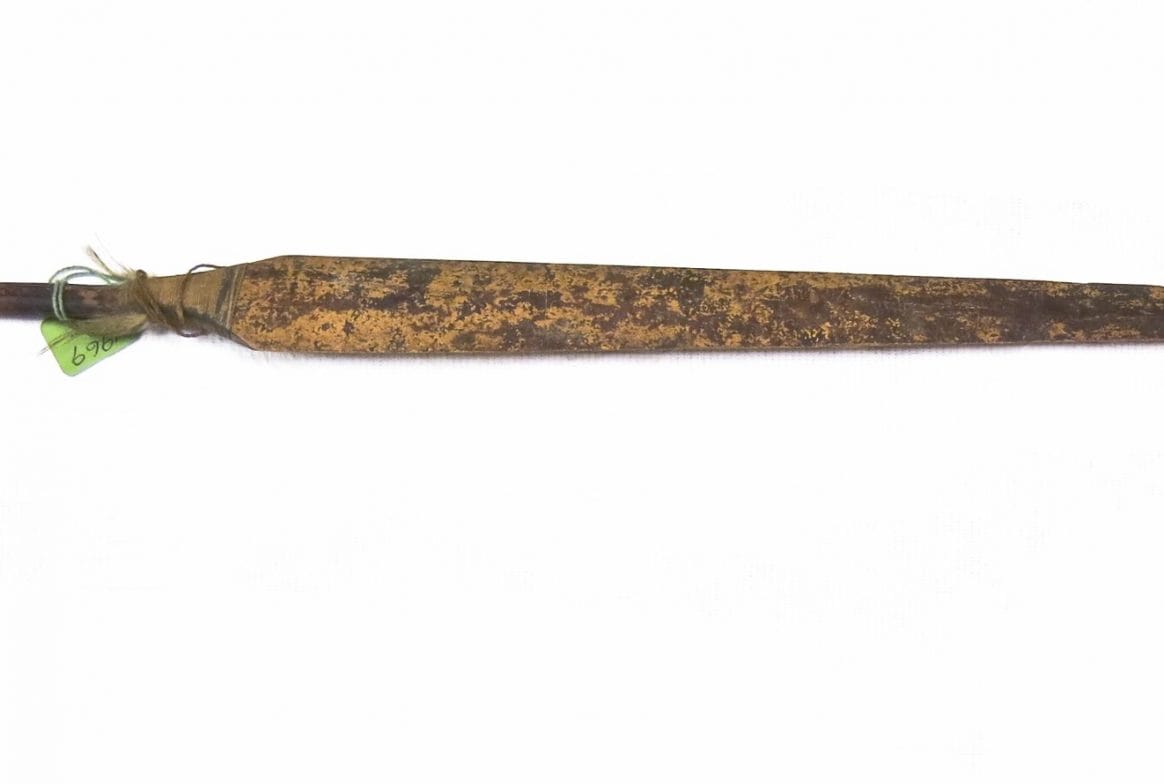
Poison arrow
Living in the rainforest, the Waiwai people are surrounded by many animals and plants they use in their everyday lives. They live by gardening, hunting, fishing and collecting wild plants. This arrow is probably used for hunting large animals such as tapir, jaguar and monkey. It is made from bamboo and the tip is painted with plant poisons. The powerful poisons can paralyse animals.
The Waiwai only hunt and kill what they need, and food is shared with the community. They believe that the animals are a gift and that the animal gives their life to the hunter. Animals are not killed unnecessarily or wasted.
The Waiwai only hunt and kill what they need, and food is shared with the community. They believe that the animals are a gift and that the animal gives their life to the hunter. Animals are not killed unnecessarily or wasted.
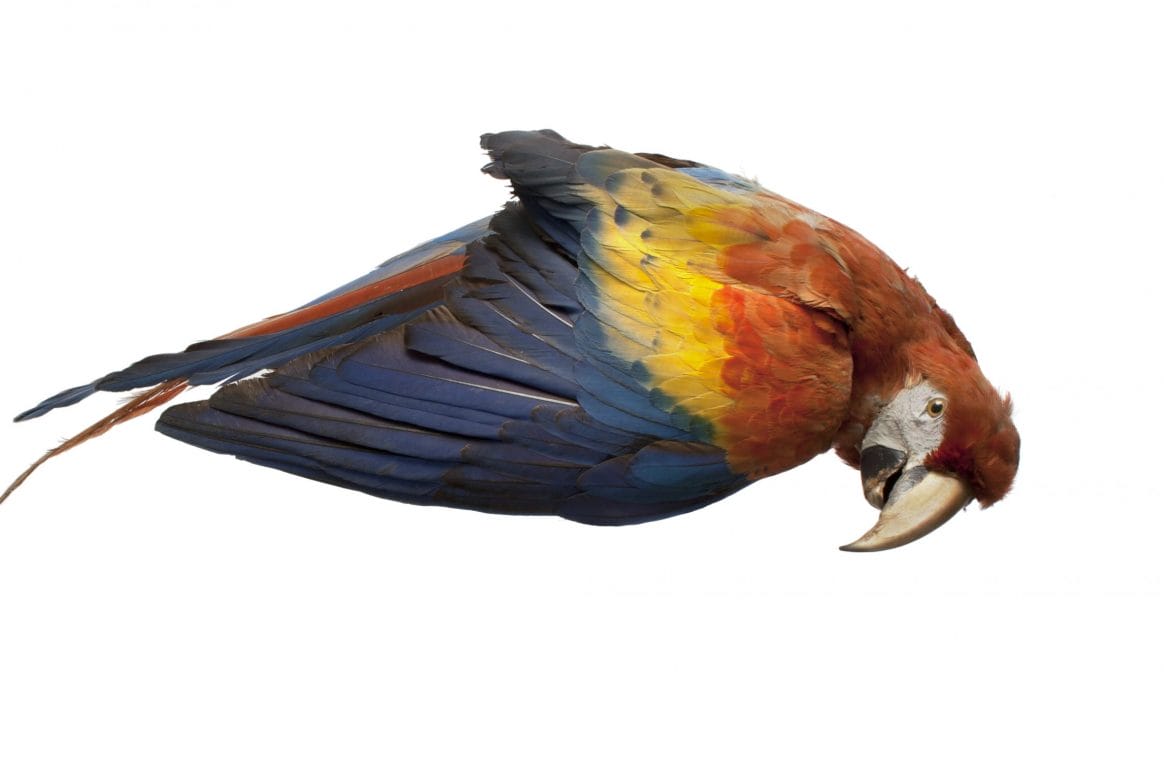
Scarlet Macaw
The Waiwai have used the brightly coloured feathers of the scarlet macaw to decorate objects such as hair tubes and lip decorations. Birds are important to the Waiwai people of Guyana. They believe that animal and human life are interconnected and that the human spirit can fly to other worlds in what Waiwai people call kapu, the layered universe.
Scarlet macaws are parrots that are well suited to living in a rainforest habitat. They have large, powerful beaks that easily crack nuts and seeds. They also have gripping toes that they use to latch onto branches and to grab, hold, and examine items.
Scarlet macaws are parrots that are well suited to living in a rainforest habitat. They have large, powerful beaks that easily crack nuts and seeds. They also have gripping toes that they use to latch onto branches and to grab, hold, and examine items.
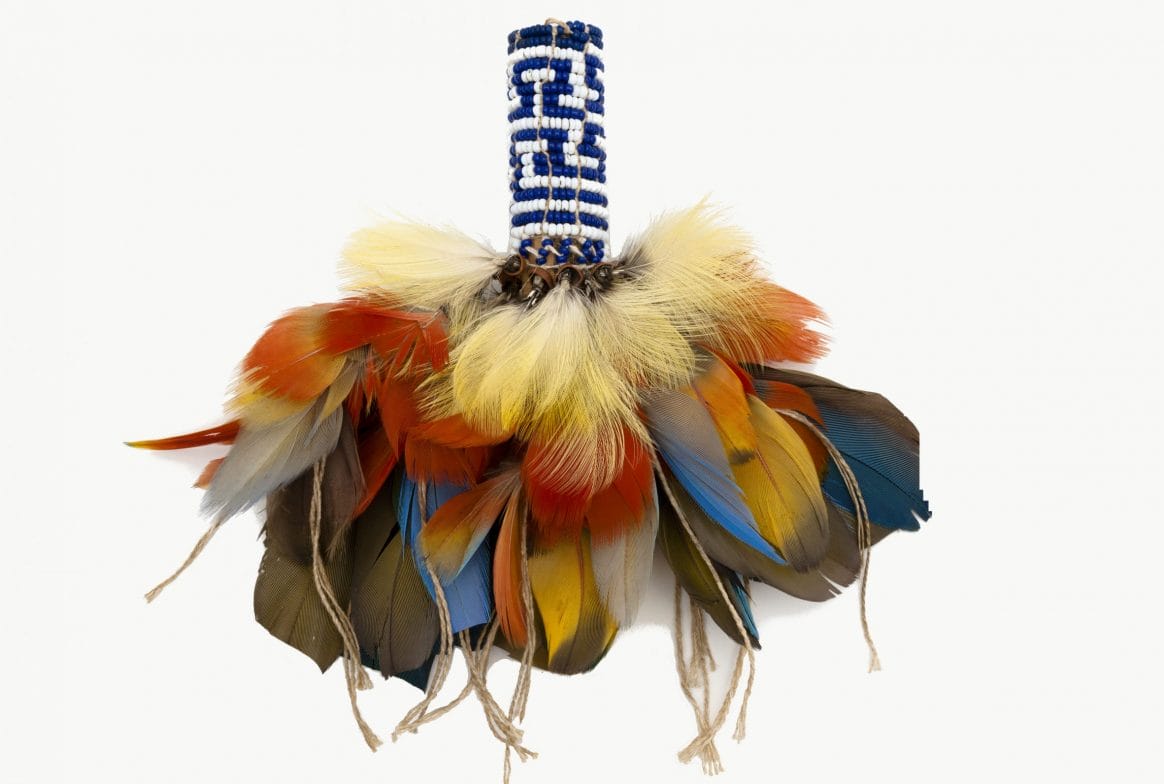
Hair tube
Where would you wear this? The Waiwai men and boys wear these tubes in their hair for special occasions. It is made from real bird feathers and the feathers remind the Waiwai how important birds are to them. Making and wearing beautiful objects is part of becoming a 'real human' which is something the Waiwai people aim to achieve throughout their lives.
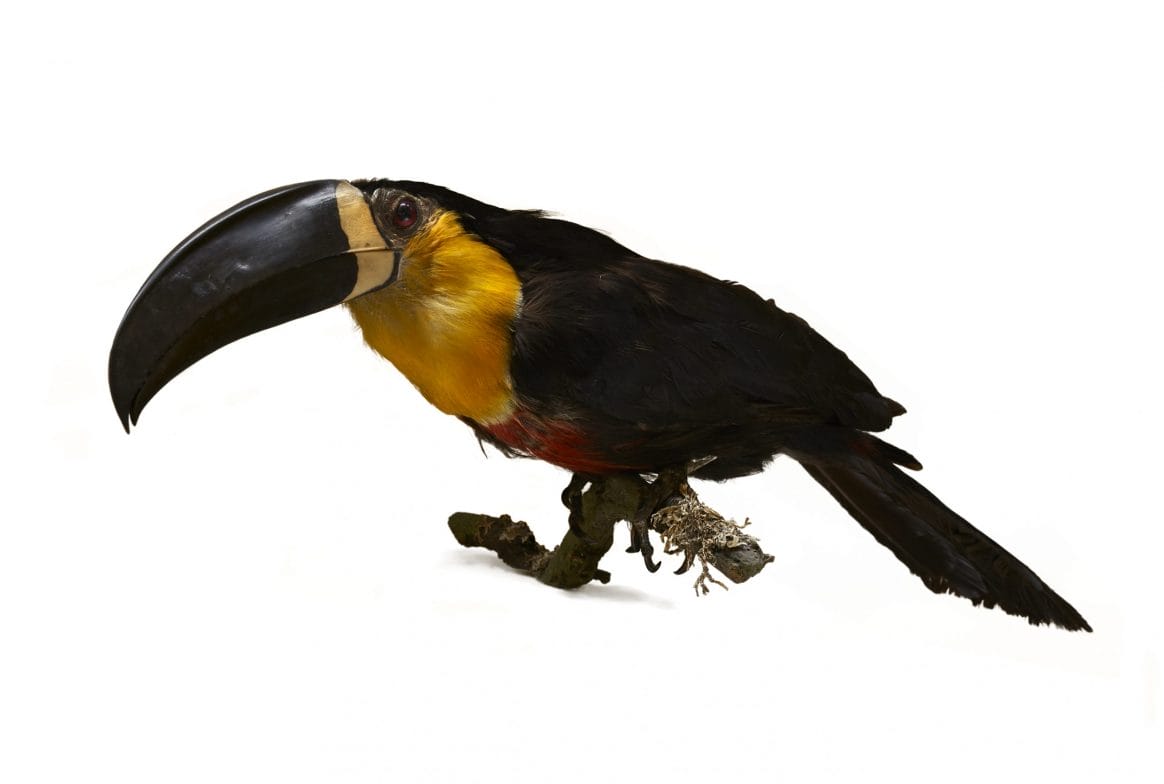
Toucan
Why the big beak? Toucans use their large beak to pick fruit. It might attract a mate or scare away predators too. Their bills are very light and made of keratin, the same as our nails and hair. They live in rainforests in South America and spend most of their time at the top in the canopy layer away from danger. Their predators are eagles, snakes and jaguar but the biggest threat to toucans is habitat loss.
The Waiwai have used toucan feathers to decorate objects such as hair tubes and headdresses.
The Waiwai have used toucan feathers to decorate objects such as hair tubes and headdresses.
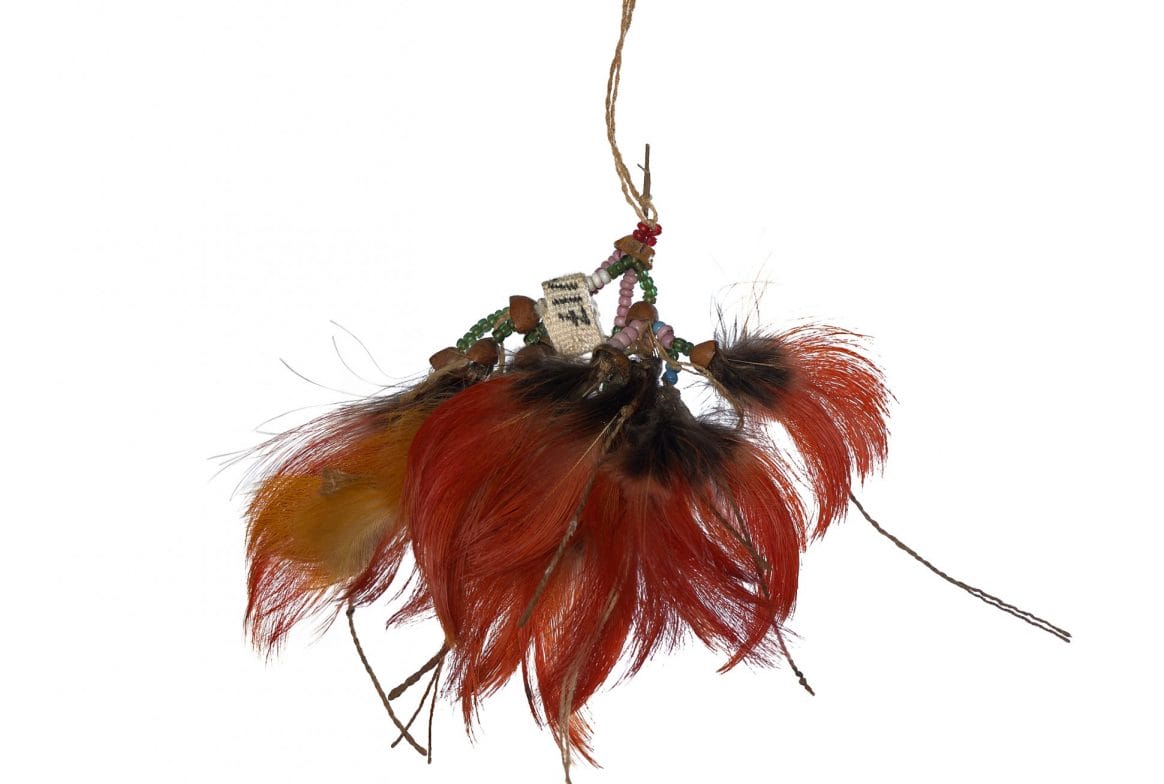
Lip ornament
Creating and wearing beautiful objects is important to the Waiwai people of Guyana. Being a ‘real human’ is something they aim to achieve from birth through sharing food, time and love. Being a ‘real human’ is beautiful. This object is a decoration worn through a hole in the lip. It is made from materials from their rainforest home and significantly bird feathers. The Waiwai believe they are like birds and that the human spirit can fly to other worlds in what they call kapu, the layered universe.
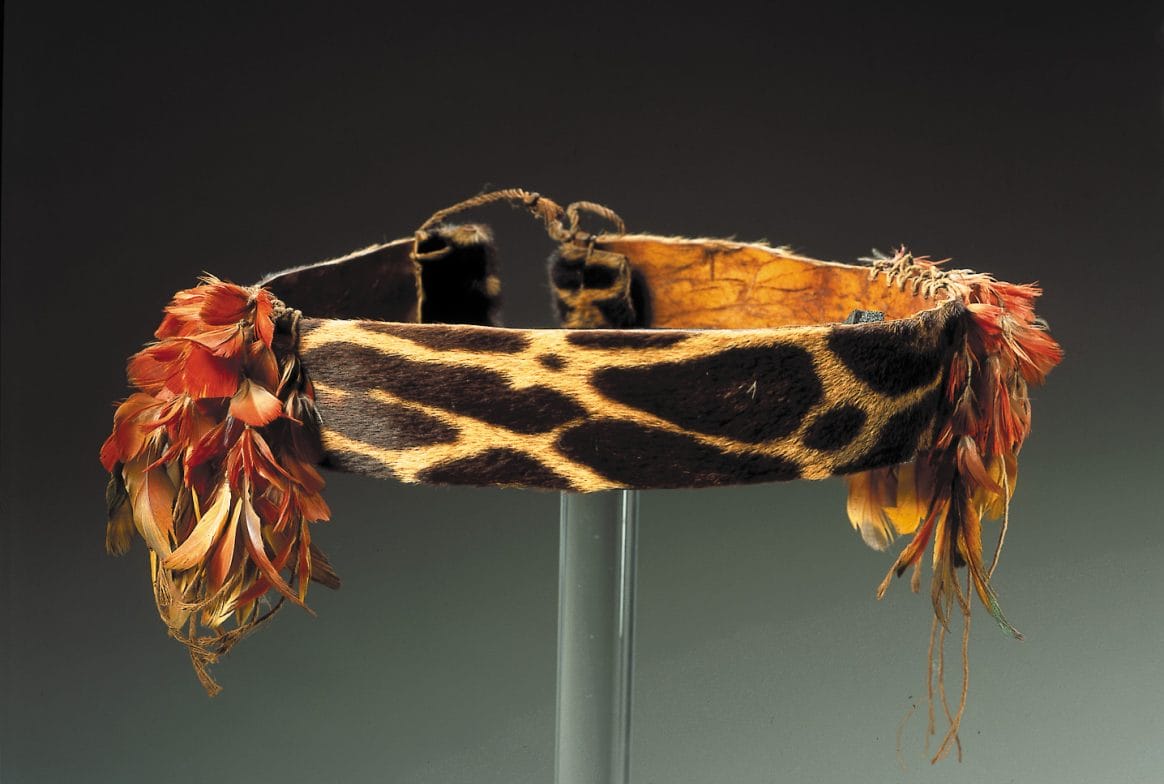
Belt
The Waiwai believe that all animals had spirits and special powers that could help you or harm you in your life. If you wore something made of jaguar skin (like this belt) you would be fast, strong and powerful like a jaguar. Belts like this would be worn for important events. Which animal would you like the powers of?
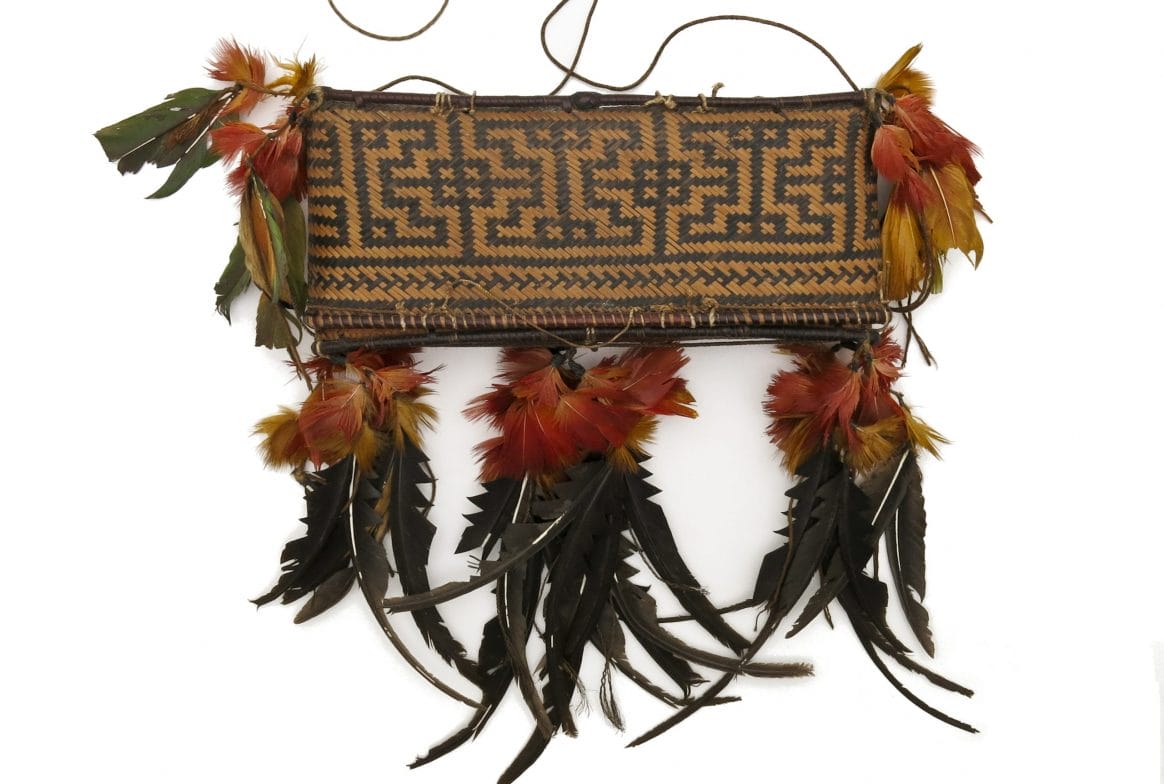
Basket
What would you keep in this basket? Weaving was traditionally a man’s job. This is a pakara or man’s bag used to store combs, hair tubes and other personal items. The pattern is weaved to represent stories and often to show animals such as scorpions, jaguars, anacondas and other animals living nearby. Each pattern has a specific name and some are much harder to achieve than others. The feathers are added to make the basket beautiful and are important decorations for the Waiwai people.
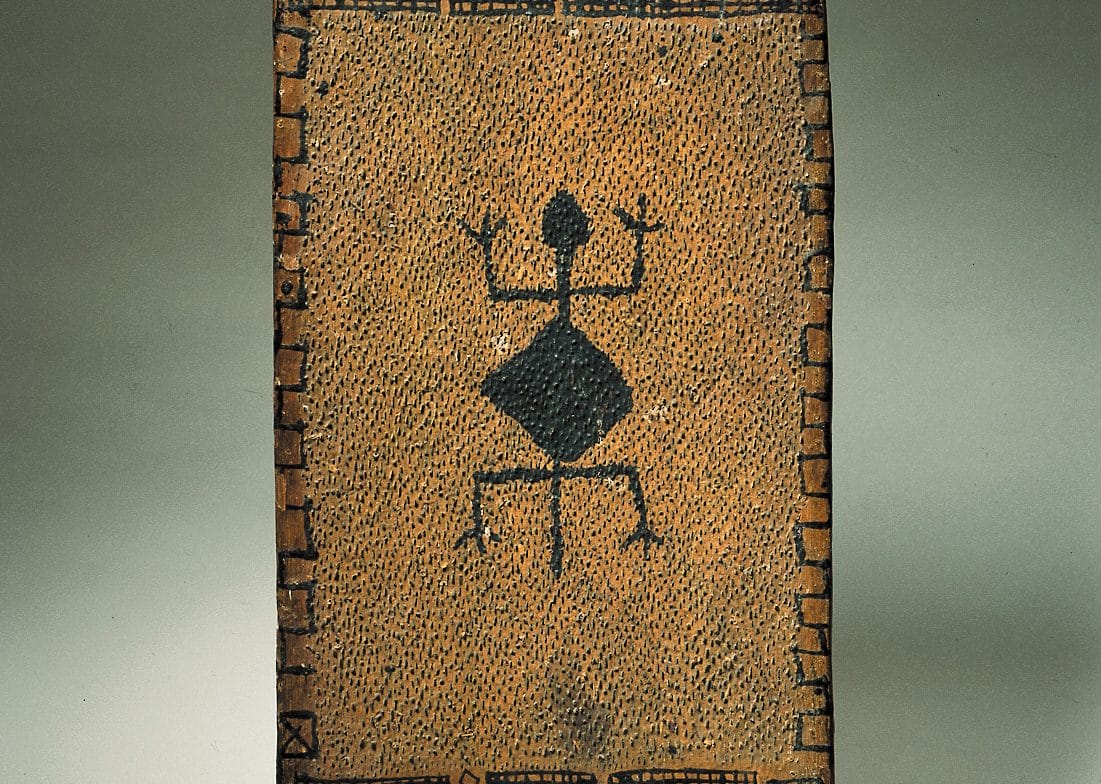
Cassava grater
Have you eaten cassava? The Waiwai eat lots of cassava but it has to be prepared properly, as it contains a poison called cyanide. Cassava is a starchy root vegetable that grows readily in the Amazon rainforest.
This is a cassava grater made and used by the Waiwai people. It would take a long time to make, as tiny sharp stones had to be placed into small holes in the wood, and then sticky tree resin is applied to hold everything in place. Mechanical graters are now replacing these traditional ones. Once the cassava has been grated it is then placed in a squeezer to drain out the poisonous juices. Then the washed and dried cassava is used to make flour, which can be baked into large flatbreads.
Which rainforest animals do you think are painted on this object?
This is a cassava grater made and used by the Waiwai people. It would take a long time to make, as tiny sharp stones had to be placed into small holes in the wood, and then sticky tree resin is applied to hold everything in place. Mechanical graters are now replacing these traditional ones. Once the cassava has been grated it is then placed in a squeezer to drain out the poisonous juices. Then the washed and dried cassava is used to make flour, which can be baked into large flatbreads.
Which rainforest animals do you think are painted on this object?
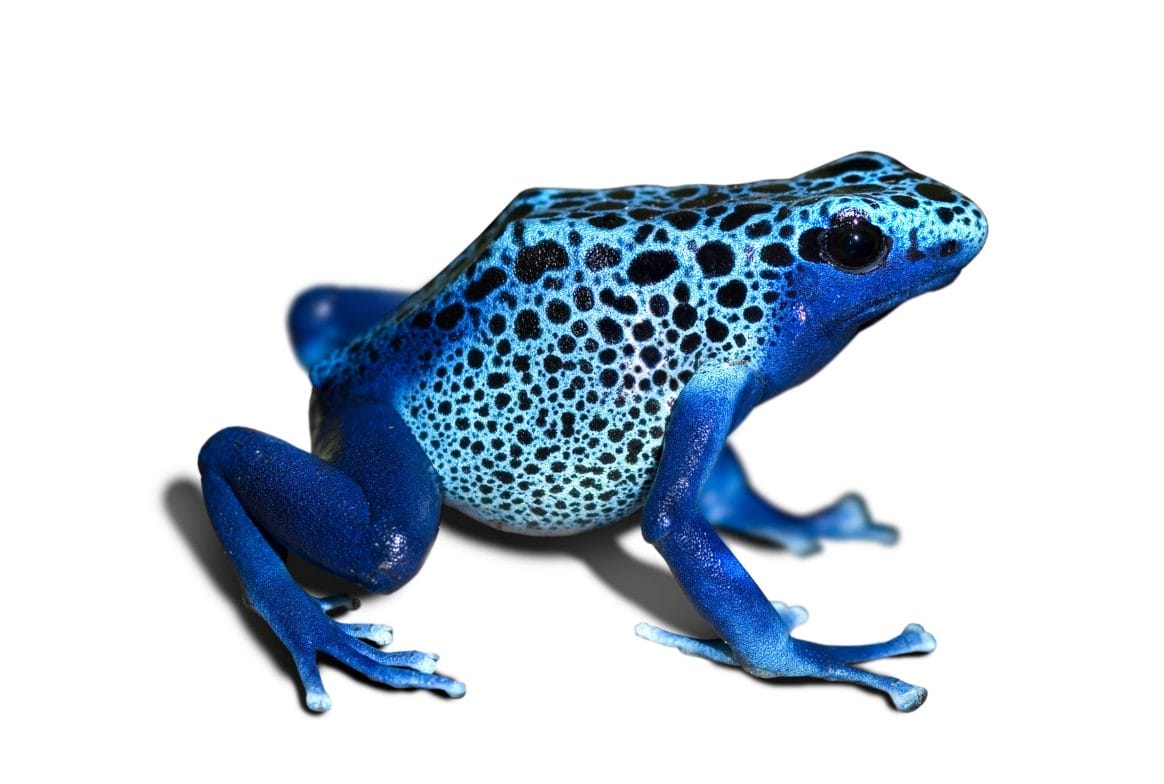
Poison frog
Don’t eat me! Poison frogs are some on the most toxic animals on the planet. Their bright colours might be a warning to other animals to say don’t eat me, I’m poisonous! They are called poison dart or arrow frogs because some groups of people in South America have use these frog’s poison for their hunting weapons.
The poison in these tiny frogs comes from their diet of ants, centipedes and beetles. So poison frogs in captivity are not poisonous, as they have a different diet to the wild. Today some types of poison frogs are endangered due to the loss of their rainforest habitat.
The poison in these tiny frogs comes from their diet of ants, centipedes and beetles. So poison frogs in captivity are not poisonous, as they have a different diet to the wild. Today some types of poison frogs are endangered due to the loss of their rainforest habitat.
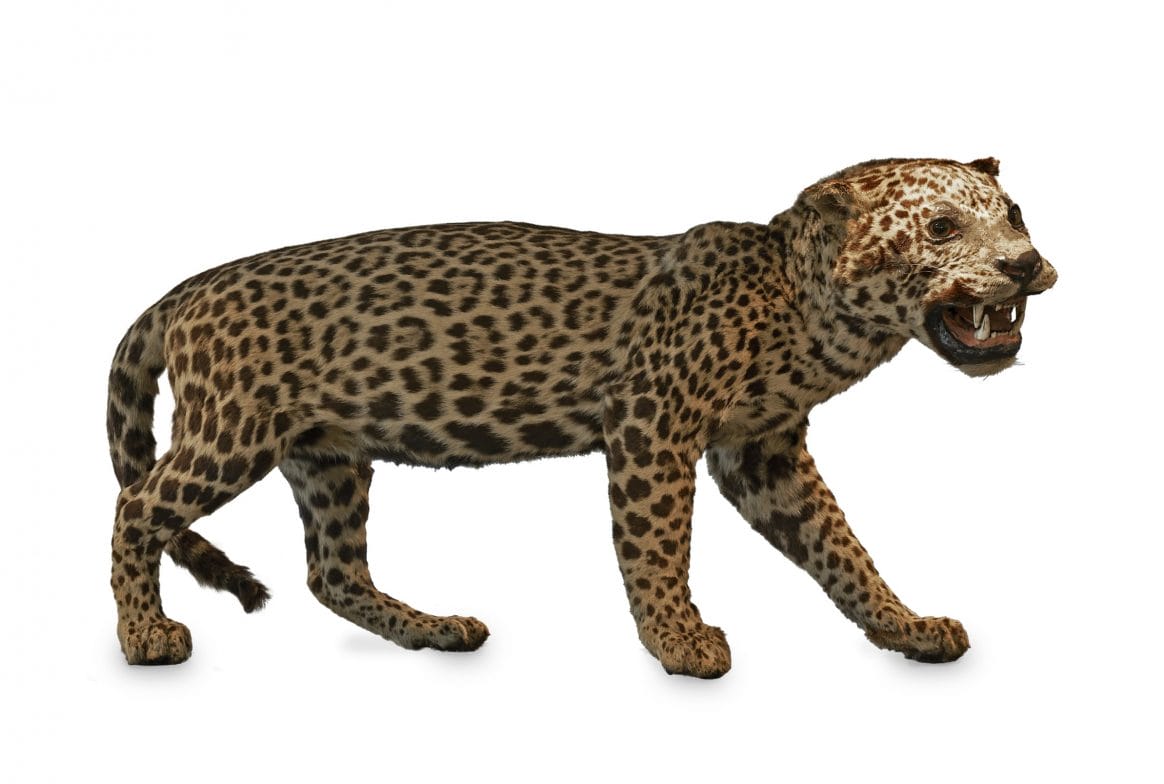
Jaguar
Jaguars are skilled predators. They kill their prey by piercing and crushing its skull with their sharp teeth and large jaw muscles. They eat caimans, (reptiles, similar to alligators) turtles and tapir among others.
The jaguar is an important animal to many groups of people in South America. Jaguar skin was used to make belts to wear at important ceremonies and the teeth used to make necklaces.
The main threats to jaguars are humans hunting them for their skin, and loss of their rainforest habitat.
The jaguar is an important animal to many groups of people in South America. Jaguar skin was used to make belts to wear at important ceremonies and the teeth used to make necklaces.
The main threats to jaguars are humans hunting them for their skin, and loss of their rainforest habitat.










